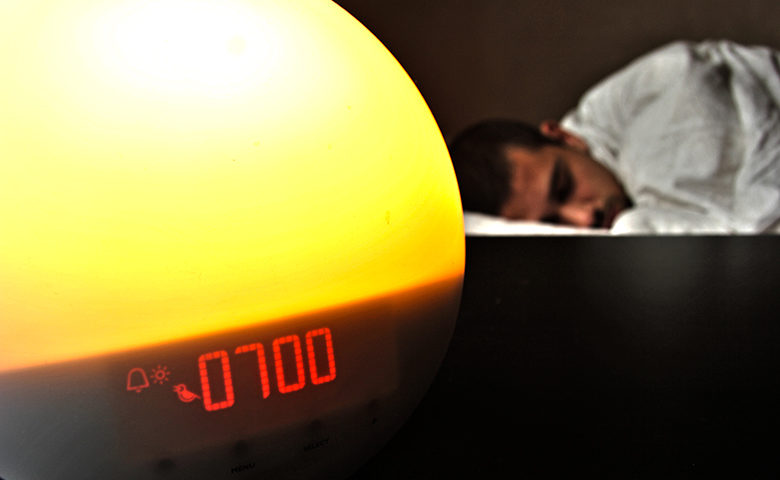For most of us, spring daylight saving time (DST) means that you’re waking up in the dark—which throws off your body’s internal clock (also known as circadian rhythm). Ultimately, your internal clock may not be ready to wake up when the alarm goes off because your brain associates darkness with sleep (and losing an hour of sleep to DST doesn’t help).
According to a study on daylight savings time and myocardial infarction, the Monday following the time change in the spring is associated with a 24% increase in daily acute myocardial infarction counts. The blaring sound of the alarm could actually be detrimental to your health. Startling yourself awake can lead to heart issues from that surge in heart rate, and your blood pressure naturally increases in the morning, which could lead to a higher risk of stroke.
Waking up to light resets your circadian rhythm. But when daylight doesn’t break until well after you need to be up, a wake-up light alarm clock could be the healthy solution you’re looking for to rouse you from your slumber. A lot of these clocks mimic the steady increasing light of a sunrise, starting with a more subdued light about a half-hour before you’re scheduled to get up and gradually turning into a bright white light to wake you.
Losing an hour of sleep in DST is similar to experiencing an interrupted sleep. And a night of interrupted sleep can be just as harmful as not getting any sleep at all. This will not only create physical risks like stroke or high blood pressure, but it will greatly affect your mental and emotional well-being, causing depression and slower reaction time. Since your body naturally wakes up when it’s light outside, a sunrise alarm clock could be a good alternative to a traditional alarm clock, allowing a good night’s rest with a gradual wake-up to eliminate the negative effects of fatigue.
But as with any preparation for DST, you need to adjust your bedtime routine bit by bit to accommodate the change in time. By modifying your sleep schedule by ten-minute increments (go to bed ten minutes earlier and wake up ten minutes earlier) each day for six days before the time change, your body will be better able to transition to DST.
If the wake-up light alarm clock is new to your routine, keep in mind that you’ll need time to adjust to this type of alarm. It’s a good idea to choose a wake-up light alarm clock with backup sound options for really heavy sleepers or for those who bury their heads to eliminate any light filtering through.
Establishing a quality sleep pattern is important, especially before DST, as there are significant increases in traffic accidents on the Monday immediately following the time change in the spring. A loss of sleep is more than just being tired—you become dangerously impaired and become a safety risk to yourself and those around you. From a company perspective, fatigue affects employees’ safety, quality, productivity and can significantly impact the bottom line. Check out these free resources to help your employees transition through DST.

